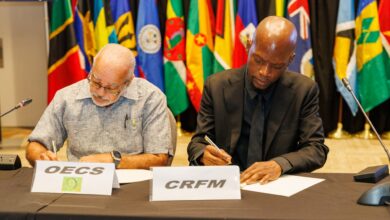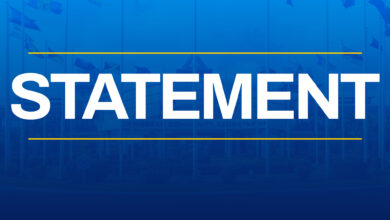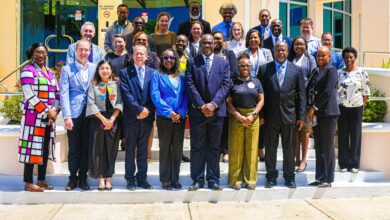Foreign Direct Investment Inflows to the Caribbean Community (CARICOM) more than tripled between 1990-1999, according to the Caribbean Trade and Investment Report, 2000 which has just been released by the Economic Intelligence and Planning Unit of the CARICOM Secretariat. This relatively good performance has earned some CARICOM States world top ratings among developing economy exporters.
The Report, while applauding the regional efforts, has however urged regional governments to be more pro-active towards improving investment prospects, adding that as far as possible they should channel FDI resources into developing appropriate regional production structures capable of generating economic activity in accordance with the needs of the Community, generally, and specifically fostering backward linkages within the domestic economy.
The Reported revealed that in 1999, FDI inflows to Member States amounted to US$1.6 billion. The figure is equivalent to a more than tripling over the last 10 years and represents an increase of 3.5 per cent over 1998. This level of inflows compares well with those recorded worldwide where, by 1999, global investment inflows had tripled to over US$640 billion within the last 10 years even though CARICOM’s share of global inflows continued to amount to just over 0.2 per cent.
It was disclosed that the major portions of foreign investment flows in CARICOM were Trinidad and Tobago and Jamaica followed by the Organisation of Eastern Caribbean States (OECS), as a group
Continuing, the Report observed that for many countries, foreign investment inflows do not exhibit a smooth upward trend. This trend , the Report contended, is particularly erratic for natural-resource rich countries like Guyana and Trinidad and Tobago, adding that this “may be due to the tendency for investment in such projects to be fairly large and lumpy in nature with lulls between expansion phases.
“CARICOM’s performance in attracting FDI inflows can be considered to be well above average, given its relatively small population and national income, with several States being ranked worldwide between five and 21 for FDI flows per US$1000 of Gross Domestic Product (GDP) and between 10-29 for FDI flows per capita,” recorded the Report.
According to the evaluation, “there has been significant growth in FDI inflows as a percentage of GDP and gross domestic capital formation (GDCF), considerably exceeded that achieved by other developing countries in the hemisphere and the world as a whole. These indicators highlight the dependence on external resources to finance and sustain growth and development in the Region. Such dependence should be carefully managed to prevent short-term fluctuations based on extra-regional economic developments from derailing the development process in Member States.”
The Report indicated that ” most of the FDI inflows to CARICOM States within the last decade have been in the form of equity capital, although reinvested earnings are becoming a significant source for the Region.” It was further observed that, to a certain extent, an increasing rate of re-investment could be indicative not only of the prospects for the future but, also, the degree of satisfaction of investors with the local business environment and the effectiveness of the investment promotion authorities.
“FDI inflows to CARICOM States while still concentrated in the traditional primary and tertiary sectors namely, mining, energy, agriculture, forestry and tourism services, began to diversify into mainly labour intensive, medium to low-technology manufacturing such as garments and data processing activities,” noted the Report which stated that there has been a resurgence of inflows into the petroleum and natural gas sector in Trinidad and Tobago.
The sectoral distribution of FDI inflows, according to the Report, has however, now begun to reflect the international trend with a concentration in the services sector, primarily the financial services.
Additionally, the Report looked at the geographical sources of FDI in CARICOM States which have begun to show some degree of diversification as well , while the United Kingdom, USA, Canada and the Netherlands continue to be the major sources of FDI inflows. This is in addition to several Member States which have received investments originating from European countries (mainly France, Germany and Spain), Asia (in particular, India) and South Africa.
Despite the relatively small size of the manufacturing sector in the Community, exports of manufactures are beginning to grow in significance, the Report also observed, noting that for example, in 1997, Trinidad and Tobago was ranked as number 22 among the top 25 developing economy exporters of medium technology manufactures, and at 23 among the top developing country exporters of resource-based manufactures.
A notable development within the Community was that the productive activities in CARICOM also reflect the changing mode of doing business in a globalized world with Trinidad and Tobago, Jamaica,The Bahamas and Barbados being ranked at 1, 11, 23 and 24 respectively with regard to the “transnationality index”of developing economy host territories for the year 1996.
The transnationality index is based on the average of the share of FDI inflows as a percentage of gross fixed capital formation for the last three years; FDI inward stock as a percentage of GDP; value added of foreign affiliates as a percentage of GDP; and employment of foreign affiliates as a percentage of total employment. According to the World Investment Report 2000, the rankings of these four countries in 1997 were 1, 15, 20 and 24, respectively.
Meanwhile, it has been observed that during the last decade CARICOM Member States have made considerable progress in policy changes to create a conducive and enabling environment for FDI inflows. These mechanisms include streamlining the process for investment approvals, establishing export processing zones, and entering into bilateral investment and double taxation agreements with third countries as well as intra-regional countries, in order to strengthen the guarantees given to investors regarding the security of their investments.





